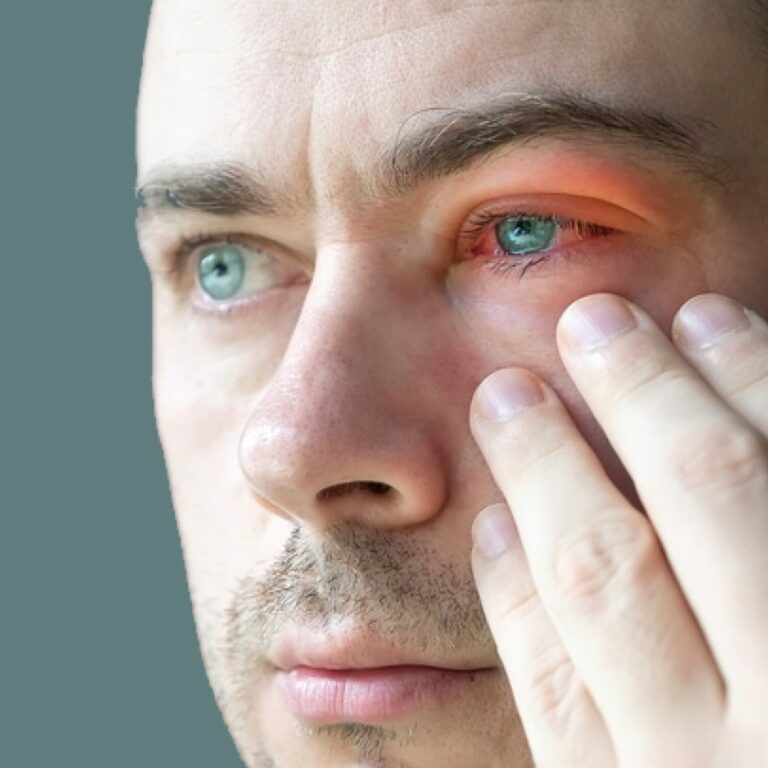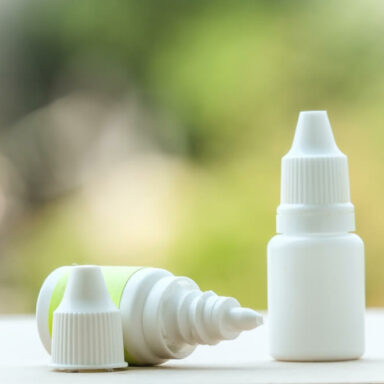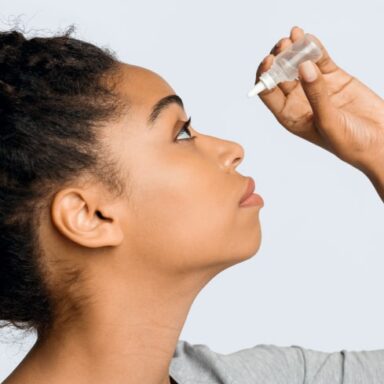Have you ever had red swollen eyelids? There’s a fancy medical term for that called blepharitis, pronounced bleh – fuh – rai – tuhs, which you might hear your doctor or pharmacist use.
It can sound alarming if you’ve not heard of it before, but rest assured it’s a very common eye condition and usually isn’t serious. You might feel a bit uncomfortable and want to hide under a duvet, but that’s as bad as it gets for most people. Plus, it’s easily treatable so you can find fast relief, often without even needing a prescription!
With any panic over, let’s talk a bit more about symptoms to watch out for, what causes it, why you might be experiencing it and what you can do about it.
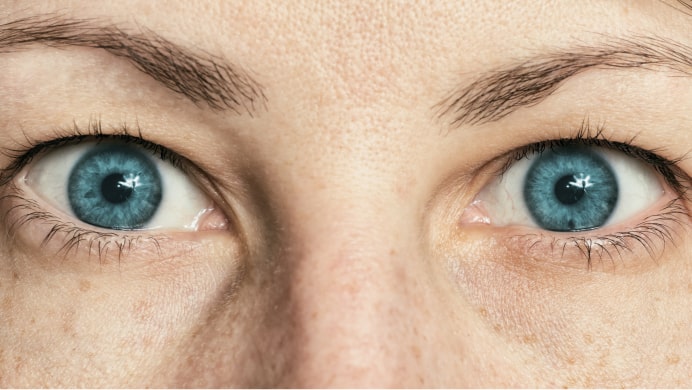
Do I have blepharitis or something else?
The skin on our eyelids might be thin and delicate but it plays a beefy role when it comes to protecting our precious eyes, taking the brunt of any physical threats. It’s the reason why we have the blink reflex! Given this, most of us will have irritated them at some point, whether from a rough fingernail, harsh eye make-up or a reaction to tree pollen.
Most of these irritations are short lived and when the irritant is taken away – the scratch healed, the eye make-up removed, the pollen is washed away – the redness and swelling soon disappears too. What makes blepharitis different is that usually the symptoms last longer and keep coming back – this is known as a chronic condition.
This means, you could have long periods where symptoms are mild and go away completely, and then times when the symptoms come back and are more severe. Blepharitis can be short-lasting and temporary too (known as acute), but that’s less common so we won’t dwell on it here.
Also, unlike other causes of eye inflammation like bacterial conjunctivitis, blepharitis normally affects both eyes equally, so it’ll affect both eyelids by roughly the same amount.
You should also know there’s two different types, depending on where on the eyelid you get symptoms:
- Anterior blepharitis: Affects where your eyelashes attach to your eyelid on the outside of your eye
- Posterior blepharitis: Affects the part of the eyelid that touches your eye – the outside of the inner edge of the eyelid
What are the other symptoms of blepharitis?
The classic sign of blepharitis’ is red, swollen and itchy eyelids – that can sound like a lot of other eye conditions so it’s easy to miss and mistake for something else. But if you’ve got symptoms that are worse around the root of the lashes, it’s a tell-tale sign.2
Look out for:1
- Swelling
- Redness
- Itchy skin
- Soreness
- Flakes (similar to dandruff)
- Crusts
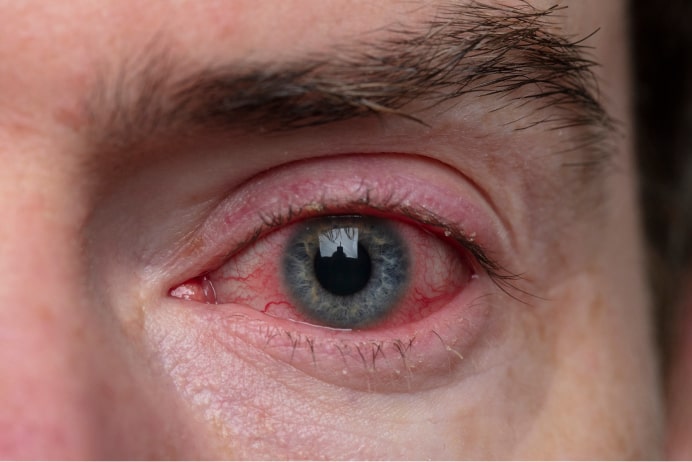
Some people also notice that their tears look foamy with small bubbles in them.
If you’ve been living with symptoms for a long time or they’re particularly bad, parts of your eye might be swollen, and your eyelashes might be falling out or growing in the wrong direction too.3 What’s more, blepharitis can lead to complications for some people, including:4
- Cysts
- Scarring on the eyelid that stops your eyelashes growing
- Blocked oil glands
- Styes (a small sore lump that appears on the base of your eyelashes)
- Eye infection
- Watery eyes
- Dry eyes
Given this, it’s easy to understand why it’s important to treat blepharitis!
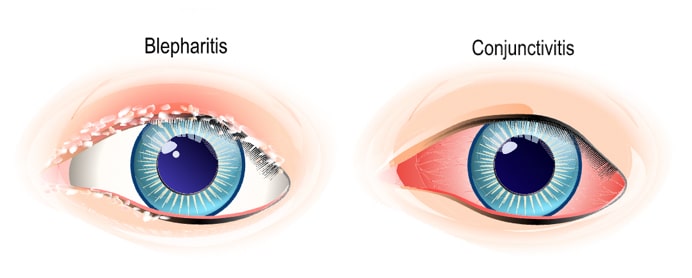
What’s the main cause of blepharitis?
To talk about the cause of blepharitis, it’s important to firstly cover off what it’s not caused by. Blepharitis is not caused by:
- Poor hygiene
- A bacterial infection
- Something you can catch / pass onto other people
With that covered, we can now talk about skin bacteria. All of us have it – it’s normal, completely healthy and all over our skin including our eyelids. Often, with blepharitis it’s thought that these bacteria get out of control and overproduce around the eyelashes. This causes the body to have an inflammatory reaction, leading to redness and swelling on the eyelids.
This can happen to anyone at any age, but you’re more at risk if you’re aged over 50 or very young.5 If you live with certain skin conditions like dandruff, rosacea, and dermatitis, it can also mean you’re more likely to develop blepharitis.6
For these reasons, it’s important you see your doctor so they can diagnose it and let you know if there is an underlying cause that also needs treatment. Most often, your doctor won’t be able to say what’s causing blepharitis in your individual case and, while that can feel frustrating, knowing that this is normal, and you’re not alone can help.7
How is blepharitis diagnosed?
Your doctor will examine your eye and ask some questions about your symptoms and any allergies you may have. They’re likely to use some specialist tools to help look closely at your eye such as a magnifying glass or microscope, but don’t worry as this is quick and painless.8
If they suspect you may have an infection – whether that’s caused by bacteria, fungi or a virus – then they’ll swab your eye for testing at a laboratory.9
How to treat blepharitis
There isn’t a cure for blepharitis, but the good news is that there are plenty of treatments that can help rapidly relieve symptoms so you can feel at your best again.
1. Eye pads and wipes
Your pharmacist might recommend these to help to clean your eyelids and remove any flakes of dead skin or weeping
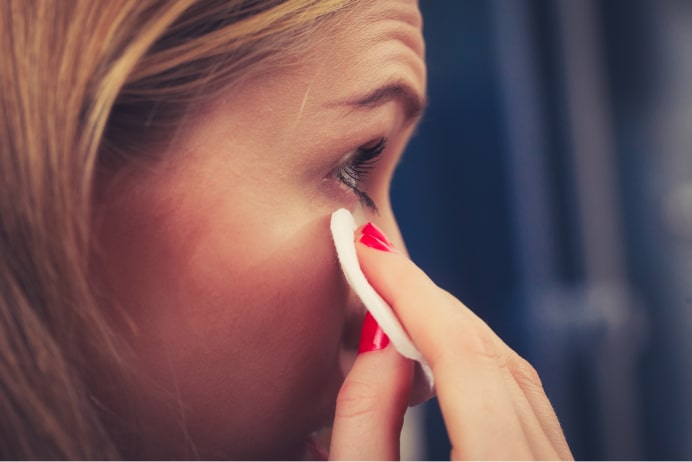
2. Eye drops and gels
These can relieve irritation, swelling, itchiness and redness, and can be found at your pharmacy without the need for a prescription
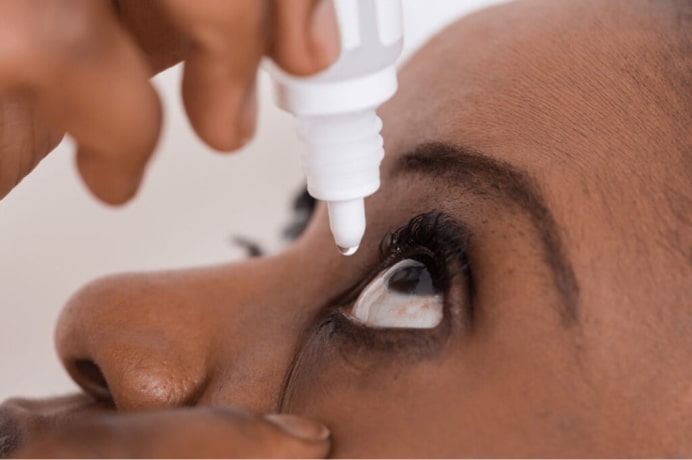
3. Treat pre-existing conditions
If you live with dandruff, rosacea or dermatitis, managing these can help. Speak to your pharmacist or doctor for more information.
If your symptoms still don’t improve after a few weeks or get drastically worse, then you should see your GP. They may prescribe medication such as steroid eye drops, antibiotics or medicated ointments.
Important:
Blepharitis usually doesn’t go away by itself, and it can lead to complications such as infections, so it’s important to get it diagnosed and treat it.
Many of the symptoms of blepharitis are similar to a serious eye infection.10 Eye infections require immediate medical attention, and you should see your doctor as soon as possible if you suspect one.
Home remedies and lifestyle changes
There are simple things you can do at home to help reduce symptoms, prevent flare-ups and find some relief. It’s important to note that these won’t work for everyone. Experiment, find out what works for you and your lifestyle, find a routine and be persistent – these things often take time.
- Wash your face and eyelids daily
This is really important to weave into your routine. Pay special attention to removing any eye make-up and eye crusts/flakes before bedtime. - Only touch with clean hands
Stop the itch scratch cycle! Avoid itching and rubbing as while it gives instant satisfaction, in the long term it just leads to even more irritation. It can spread infection too. - Opt for glasses
During a flare-up of symptoms, don’t wear contact lenses until things improve. Doing this can help increase airflow to the eyes and healing. - Replace eye make-up
A little-known fact, but mascaras, eyeshadows and eyeliners have an expiry date as bacteria can build up in the containers. Replace them regularly and never share or use second-hand makeup. - Avoid tightlining
Eyeliner close to the lash line can irritate, especially if you’re already experiencing inflammation. Taking a break from eye make-up altogether can help. - Warm compress
Simply soaking a clean cloth in warm water, then gently compress it on the eyelid. This can feel particularly soothing if you’re experiencing swelling or dryness. - Eyelid massage
Place the finger in the corner of the eye, then gently sweep the finger along the eyelid to the outer corner. This helps move your natural skin oils across the eyelid, moisturising and reduce soreness and dryness. - Drinking coffee
Some small studies have shown that caffeine can help. However, while research is promising, blepharitis and coffee has not yet been definitively linked so it’s not an excuse to start adding more coffee to your diet!11
Your general health and immune system can also affect flare-ups, so keeping well by getting enough sleep, exercising regularly, moderating alcohol intake12 and eating a balanced diet are all useful. If you smoke, you should also consider quitting.
Outlook: How long does blepharitis take to clear up?
If you’re treating the symptoms of blepharitis, the outlook is normally good. By carefully cleaning your eyelids every day and using eye drops, a flare-up might only last a few days!
If it lasts a little longer, don’t worry this is normal too. Everyone is different and it’ll depend on your lifestyle, environment, general health and immune system, and what treatment you’re using. If things get worse or if you don’t find relief after a few weeks of using treatment, then make sure you speak with your doctor or ophthalmologist.


